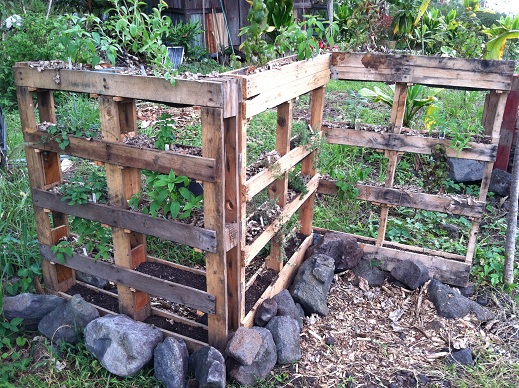
There are many questions to homesteading, especially since independence is somewhat a frightening concept. Homesteading takes much time to learn the skills and techniques that surrounding gardening, building, and crafting. Perhaps it will take you five to 10 years to become a proficient gardener. Likewise, homesteading is the "old" and "new way" of living; because we can learn from our relatives how to build a home and grow food; but we can also learn from young folks how to coincide sustainably with nature, humans, and technology.
At length, homesteading requires much dedication, investment, creativity, frugality, and resources. But, where do you start? Do I start looking for land for sale? How much time can I invest in building my home? How much time can I invest in growing a garden?
All of those questions will be answered or have been answered throughout my blog; but I want to use this blog post to point out a FULL LIST OF MATERIALS you will need for homesteading. This list will assist you in estimating your budget/investment. By providing you a list of supplies you will need, this will give you the opportunity to think creatively:
what materials can I make? What materials can I borrow? And, what materials do I have to buy? For example, a ladder does not have to be purchased; instead, you can build your own ladder out of free recycled wood (found at pallet shops, sawmills, or pallets behind grocery stores.)
If you see something I missed, please comment below, and I will add it!
A
Ash (compost)
Axe
B
Bamboo (posts, stakes)
Barrels (Rain)
Batteries
Battery Charger
Beams (wood posts)
Books (philosophy, instructional, garden, fiction)
Bottles (starting seeds indoors)
Bricks (rock, stone)
Brushes (painting, plastering)
Buckets (5 gallon)
C
Calculator
Canner (pressure cooker)
Carpenter's Level
Cart (wheelbarrow)
Cellar (cold storage)
Chains
Chainsaw
Chairs (home)
Chalk line
Cheesecloth
Chicken wire
Clamshell digger (post hole)
Compost (organic)
CONTAINERS (unique gardening)
Cooler (food storing)
Crates (storage)
Cultivator (rototiller)
D
DC>AC inverter (solar panels)
Decor (outdoor/garden)
Dehydrator
Door (home)
Drill (speed)
Drill bits
Drums (55-gallon)
Duct tape
E
F
Fencing (wire)
Fertilizer (organic)
Forks (garden)
Freezer (cooler, food storage)
Froe
G
Galvanized screening (sifting)
Garden hose
Generator
Gloves
Goggles (safety)
Greenhouse(s)
H
Hammer
Handkerchief (cleaning tools)
Hand saw
Hose (garden)
Hoe
I
INTERNET
J
Jars (Mason)
K
Knife (utility)
L
Ladder
Level (carpenters)
M
Machetes
Mallet (wooden)
Marker pencil
Mattock
Measuring tape
Mulch
N
Nails
O
Organic SOIL
Outdoor Decor
Oven (made from sand, clay, & straw)
P
Pallets (recycled wood for trellis)
Pencils (marker)
Pickax
Pinch bar
Pitchfork
Plants (vegetable plugs, flowers)
Plastic sheeting (black & Clear)
Pliers
Pocket knife
Poles (posts, beams)
Post hole digger
POSTS (beams)
Pots (Flower, vegetable, herbs)
Pressure Cooker (canner)
Pruning shears
Pulaski
Q
R
Rain barrels
Rake
Rock minerals (improving soil)
ROCKS (decor, building structures)
Rope
Roof structure (metal, shingles, lumber)
Root Cellar (cold storage)
Rototiller
Ruler (yardstick)
S
Safety goggles
Sand (for garden & home material)
Saw (hand or chain)
Saw horses
Screens (galvanized)
Screwdriver
SEEDS (flower, herb, veggie, fruit)
Shears (pruning)
Sheets (plastic, tarp)
Shovel
SOIL (organic gardening)
Solar panels
SPACE (for gardening)
Spades (digging)
Sponge (finishing interior of home)
Stakes (posts or poles)
Step ladder
String (hemp, rope)
Swanson square
T
Table (home)
TARP (plastic sheeting)
Tape measure
Tiller (rototiller)
Tool box
Trays (starting seeds)
Trellises (Arbors)
U
Utility knife
V
W
Watering system
Wheel barrel
Windows (home)
Wood mallet
Wood posts (beams for home)
Wood stove
Worms (compost)
X
Y
Yardstick (ruler)
Z
Keep in mind, you may not need most of these items. In fact, you may not
need windows, doors, or tables because you do not plan on making a home
or shed.
Then again, if you are planning to build your own home, you may need MORE than what's listed above. A new home-owner needs silverware, kitchen appliances,
bed sheets, pillows, etc. If you want to build your own home -- keep in mind
that I have not listed exact building materials. Here is an idea of basic materials you may need for your home:
For the
foundation of the house you may need rocks, bricks, concrete, or gravel. For structure of home (cob walls), you will need clay soil, sandy soil or sand, water, and straw. For roofing, you'll need lumber, poles, boards, and windows. Of course, you'll need glass or windows, doors, hinges, knobs, etc.
Again, if I missed an important tool or material, please comment below and I will add it to the list.
How much money have you invested in homesteading, so far? I have the luxury of borrowing most of my Grandfather's tools and supplies, as well as the space to grow food and build a home. I'm very fortunate for this!
























